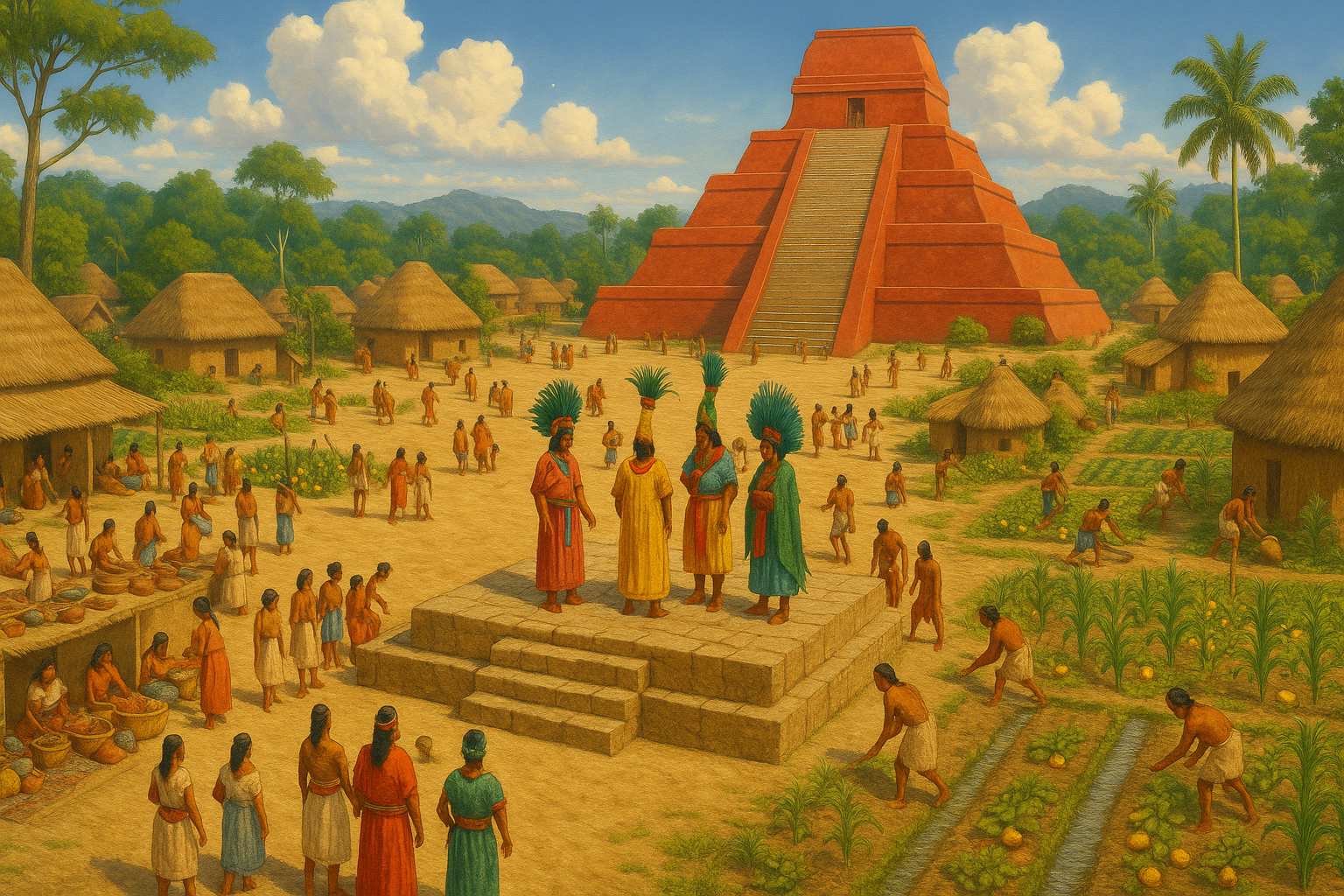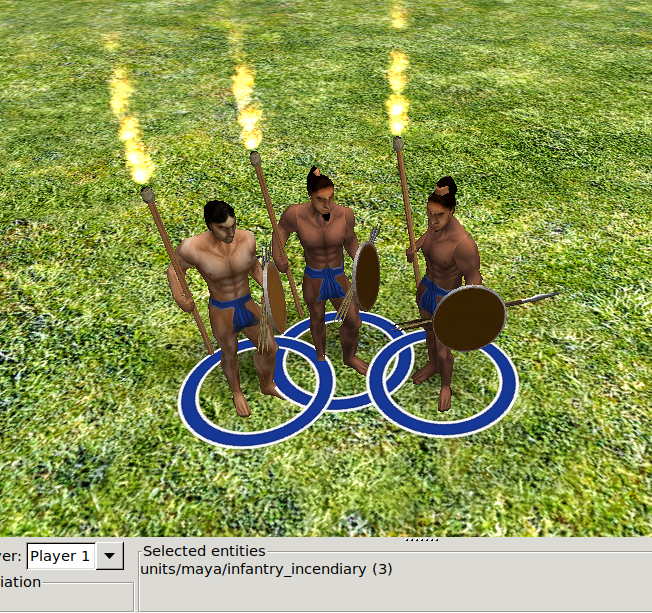-
Posts
851 -
Joined
-
Last visited
-
Days Won
20
Everything posted by Lopess
-
I'll upload(github) it right after I get home. (I'm still at work).
-
We have available in the mod.io. However, I can add it if I want.
-
As discussed yesterday, @Lion.Kanzen came up with the idea of using a torch unit for the Zapotecs, something I also used with the Maya (the use of fire was a technique in Mesoamerica, the Zapotecs used it against enemy cities in the time of the 0a.d. ). We could use archers or javalineer too.
-
I like your interest and willingness to help this is very good. However, if we take into account the desire for equal historical precision that was used in other civilizations, it does not make any sense for a blowing unit for the preclassical Zapotecs. There are no references to them (different from the Maya). We have the updated zapotecs on the github, currently they have two fighting champions, one being a noble spearman, and the other a Macahuitl warrior who has the ability to shoot with a bow and arrow.
-
This weekend I will try to make new helmets and body textures for the Zapotecs, the current ones mostly from the postclassic. As you can see in the previous conversations I believe that a siege warrior with torches and a scout unit could be added, I believe that a balance will be necessary. I am not an english speaker, any error automatically consider a google translate error.
-
If you want me to update them to alpha 25, I'm just going to wait for the freeze to be done.
-
On github there is an updated version of terra magna for alpha 24. Download it if you want to see the current gameplay.
-
I support it but I still see him as a "teenager", perhaps after the zapotecs are completely complete and accurate.
-
-
@Lion.Kanzen, what do you think of giving the Zapotec champion a ranged attack on buildings with fire? I still don't know how, but I believe it is possible for him to change ranged attacks on buildings and fight hand-to-hand against other units.
-
-

Mayan buildings for 0.A.D (under development).
Lopess replied to Lopess's topic in Game Modification
¡Muy bueno felicitaciones! Sigue así. -

Proposal, Mayan City States [preclassic and classic]
Lopess replied to Lion.Kanzen's topic in Rise of the East
I saw it, in his 19th century mod, the guy has talent. I hope some time I can help you more, especially with the Brazilian civ -

Proposal, Mayan City States [preclassic and classic]
Lopess replied to Lion.Kanzen's topic in Rise of the East
@Lion.Kanzen have you ever played with pre colonial mod recently? Take a look and see if you like the unit and the animation (creating animations is the most complicated thing for me so far). @Yekaterina a the precolonial mod is still under development, many mechanics have yet to be developed and it itself focuses on a period that would be equivalent to the middle age in Europe so its balance is focusing only on the civilizations of the mod. The preclassical Maya (made by me for the most part, they are in the final stage and their units are consistent with research I did for the reality of the time, I just need to replace some things that I believe I can do better today.) if you want to have a look is available in mod.io. The preclassical Maya of @Duileoga is still in development I believe he would like help too. -

Proposal, Mayan City States [preclassic and classic]
Lopess replied to Lion.Kanzen's topic in Rise of the East
If you go to the post-classic you can choose but not my favorite, we have access to about the war and the post-classic Mayan warriors https://en.wikipedia.org/wiki/Batab, we can do a good job with them, I am trying something like that with the tarascos (unfortunately for me that my source of research pdf is in English and has +800 pages). -

Proposal, Mayan City States [preclassic and classic]
Lopess replied to Lion.Kanzen's topic in Rise of the East
This is great, and slingers have always been good in all Mayan times, perhaps less important in the area only with the popularization of post-classic arches and arrows. -

Proposal, Mayan City States [preclassic and classic]
Lopess replied to Lion.Kanzen's topic in Rise of the East
What weapon exactly and when? : D -

what do we do with the defenses of phase 1?
Lopess replied to Lion.Kanzen's topic in Gameplay Discussion
I believe that you must be careful or the Alpha 26 will be: Make palisades useful again. -

===[TASK]=== WONDER: Persians: Apadana of Darius
Lopess replied to Mythos_Ruler's topic in Official tasks
This really should be added to the game. -

Houses, make the mini fortresses into guarded treasures
Lopess replied to fales's topic in Gameplay Discussion
House already has a lot of importance being houses ... Try to win a game without them, something really impossible even if using only houses : D -

Houses, make the mini fortresses into guarded treasures
Lopess replied to fales's topic in Gameplay Discussion
Honestly as far as I know none of the civilizations represented in the current game used houses as defensive walls. If I'm wrong please correct me. -
@RussWE Definitely not lol, it was a typo that was previously reported, but I haven't released the fix in mod.io yet, because I want to release some new improvements and more historically adjusted units (following something that has already been done: D) As a new alpha 25 is scheduled to be launched soon, I intend to launch compatible with it.
-
Lion does not fall into this type of ideology, I see many sincere right-wingers who fall into this type of discourse that presents itself with an easy solution to the ills of the country and modernity, but it is only a collection of conspiracy theories. See what is happening here in Brazil, in the manipulation of the State, part of the press and in the various coup attempts in which even heads of the Armed Forces left office because (speculation) would not support a coup (note that the armed forces of Brazil are mainly conservative and right-wing). Two days ago, there was a coordinated police operation in a poor neighborhood with 28 dead. (Totally off topic)
-

Addition of Han Chinese to 0AD
Lopess replied to Yekaterina's topic in Game Development & Technical Discussion
A simple and easy AO bake as it existed until 2.79 would be good too. -

Addition of Han Chinese to 0AD
Lopess replied to Yekaterina's topic in Game Development & Technical Discussion
Tang.





